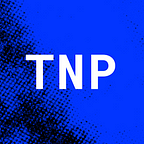19 Nov 2016 —In pursuit of risograph
--
From Nuphap Aunyanuphap to Silviã Lãnfrãnchi
Greetings from a (super) cold and foggy day in Milan! :-)
First, thanks to you and Stefano very much for yesterday’s meeting at Mare Culturale Urbano. We can now understand more about the direction and actions we must take to take the project forward. ;-)
So … Let’s roll!
ps. for those who are wondering about what this project is about, please see here for the project info.
Regarding the Production
After a quick survey of several print shops in the past weeks, I found out that digital printing is good for low volume production (maybe from 1–50 copies) since there are no set up costs and the time required to produce the book is fairly short (from 1–7 days). Another good thing about digital print is that they usually includes book binding service. Some shops are also extremely eager/helpful with not-so-normal binding that I showed them. Something like one here:
However, the cost for each copy is still too high and we have to invest quite an amount of money to produce even small amount of books.
Offset printing, in the other hand, is interesting because we can print in large volumes with less costs. One of the shop suggested that we better go for offset if we are looking to print more than 250–300 copies (because of the price is now lower than using the digital technique). However, still, the price would be too high for us to effort in the initial phase of our project.
The light then shines to one of the technique we’ve recently discussed: RISOGRAPH.
Here are the reasons:
- Our initial book is currently pretty much self-published in terms of volume, budget, and scale. Something at which risograph are intended for: self-made publications.
- The technique provides us with a design constraints (mostly sizes and colors), which is very good for us to make further design decisions. Also, the results of these production constraints are extremely astonishing and beautiful! :-)
- Since the end product of the risograph process is the paper, we also have to explore more on how to bind a book (which is really good because we will also learn something new).
I’m now in the process of contacting several risograph design studio / printing places within reach to learn more about their experiences and the printing process/technique.
I’ll keep you posted soon for any further updates from the production side! ;-)
It’s great that alot of things now have been defined for our project! I’m very excited to see our first book taking shape in no time! :-)
Thanks alot and see you soon!
N.
